Emergers
{{start}}
As the pupa or sub-imago of Mayflies, Caddis, Midges, Stoneflies, Dobson flies etc. move to and through the surface of the water to hatch they are referred to as emergers and when large numbers go through this process at the same time it is referred to as a hatch. When fish are feeding on emergers it is important to be fast and accurate in your casting and to match the form and function of the natural. When the naturals are large enough in individual size one very successful technique is to fish an emerger pattern on top as both a fly and an indicator and a nymph or midge pupa suspended just below it. Hits are often on the dead drift or on the lift.
{{end}}
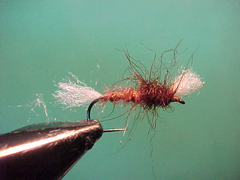
{{+1}}Shipmans buzzer{{-1}}
{{start}}
Shipman's buzzer was tied as a surface fly for Rutlands Reservoir in England. A great buggy looking buzzer that applications anywhere buzzers are emerging.{{end}}
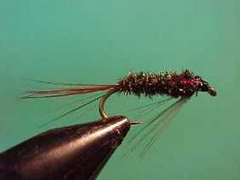
{{+1}}Diawl bach{{-1}}
{{start}}
I normally fish smaller sizes as a midge pupa and from time to time use larger sizes as a point fly in a team of wet flies on a floating or intermediate line. I tie it both with and without weight and find the addition of a small black tungsten bead makes it a handy anchor fly or a good prospecting fly in running water.{{end}}
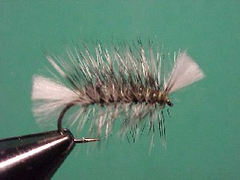
{{+1}}Midge ball{{-1}}
{{start}}
When midges are emerging they emerge in large numbers and fish often feed on them at the exclusion of all other offerings. At times the midges ball up forming dense colonies that roll along the surface of the water and are eagerly targeted by trout.{{end}}

{{+1}}Trailing shuck caddis{{-1}}
{{start}}
As the name implies this fly is a representation of that stage in the emergence when the shuck is still attached but the wing is open. With both of these elements intact the fly is obvious to both those fish that are taking just below and above the surface of the water. A good fishing tip for this fly is to hold the trailing shuck and body between your fingers when applying floatant so that when the fly is fished the trailing shuck and body still sink into or below the film. You can even add sink to the shuck to make sure it sinks.{{end}}
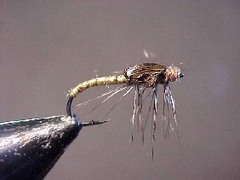
{{+1}}Rising midge{{-1}}
{{start}}
This fly is designed to be fished on the drop and then on the rise. It was originally designed to imitate the action of lake Jindabyne olive midges as they hatched but it has proven useful in other fisheries.{{end}}

{{+1}}Shuttle cock brush{{-1}}
{{start}}
Emergers which resemble a shaving brush became popular a couple of years ago and continue to get support in the fishing press. They are tied to represent a nymph that is trapped in the surface film just at that point of time when it is opening its wings.{{end}}
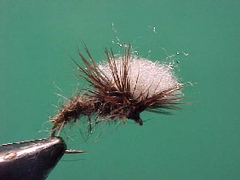
{{+1}}Klinkhammer{{-1}}
{{start}}
This Dutch fly designed for Grayling is one of the best emerger patterns and well suited when fishing to emerging mayflies and caddis. One of the big advantages of this pattern is that it is easily seen on the water because of the poly yarn post.{{end}}
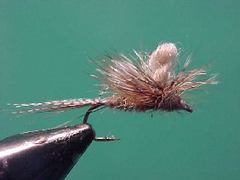
{{+1}}Para dun emerger{{-1}}
{{start}}
This is more of a class of flies rather than just a fly. Perhaps the best known Para Dun Emerger is the Parachute Adams. It was derived form the Adams Irresistible and whilst the Irresistible sits high on the surface film the parachute version sits comfortably in the film making it a very useful emerger pattern.{{end}}
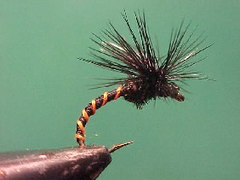
{{+1}}Hanging midge{{-1}}
{{start}}
This fly hangs from the surface with the bend of the hook down much in the same way as the natural hangs just as it is breaking the water surface - anyway that's my story and I'm sticking to it. In any case it is a suggestive fly that has taken many fish during evening midge hatches.{{end}}
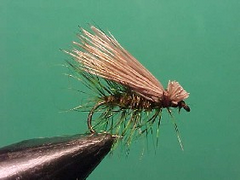
{{+1}}Elk hair caddis{{-1}}
{{start}}
When a caddis fly hatches it rises to the surface of the water, shedding its nest and shuck as it breaks through the surface tension of the water so as to reveal its wings. Caddis flies often use surface movement caused by wind and currents to assist in this process.{{end}}













